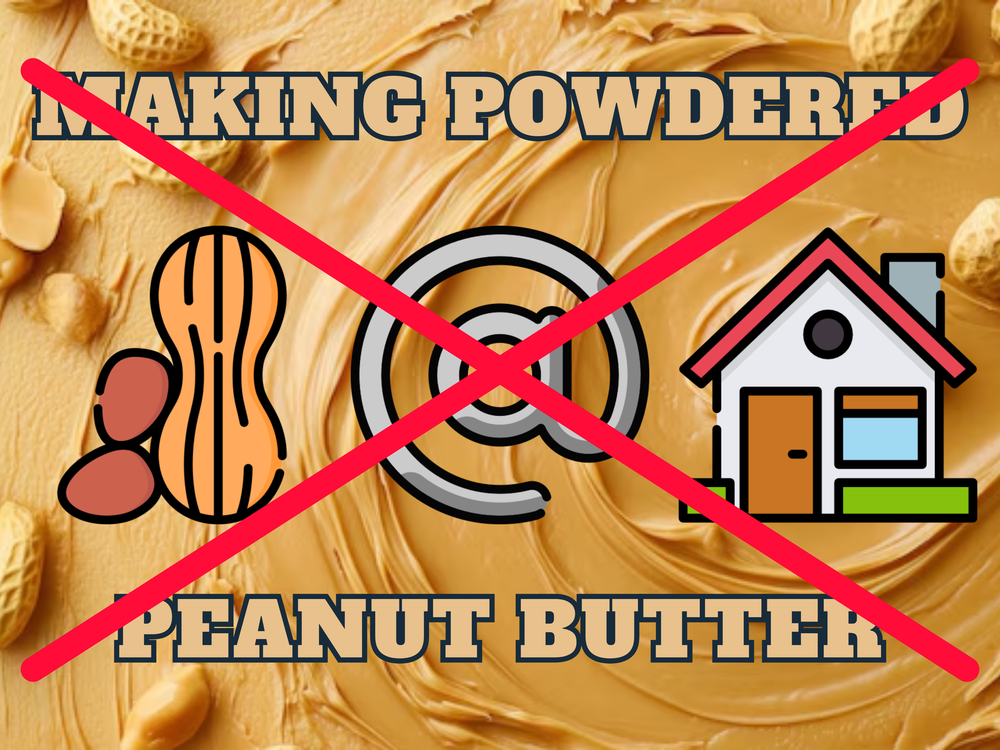
Introduction
Powdered peanut butter, more commonly known under the brand names PB2 or PBFit, is a very common ingredient in low calorie, high protein desserts and breakfasts. Essentially, it's peanuts with the oil pressed out of them, and then dehydrated and blended into a powder. The result is essentially a peanut butter flavored protein powder.
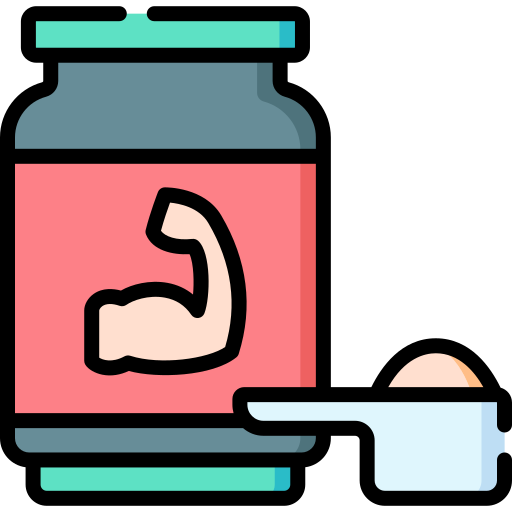
It can either be mixed with water to create a peanut butter substitute for a fraction of the calories, or it can be mixed in as an ingredient similar to flour, cocoa powder, or protein powder. But as powdered peanut butter can be both an obscure and expensive ingredient, it got me thinking: is it possible to make it yourself at home? And if so, is it even cheaper?
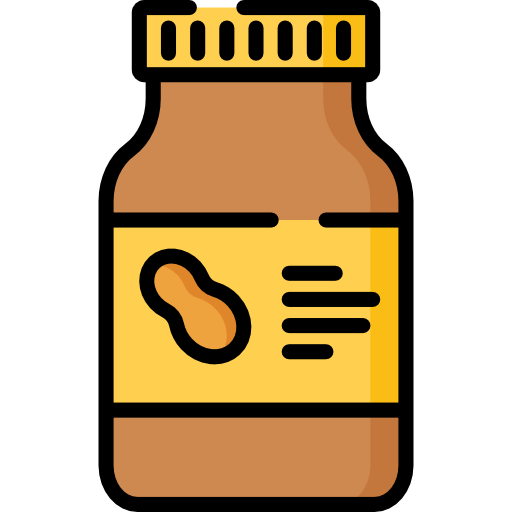
The 3 Types of Peanut Butter
The way I see it, there are 3 main types of peanut butter. First, is the storebough junk (imho), typically called either "creamy" or "no-stir". These "peanut butters" contain hydroginated oils, sugars, preservatives, and emulsifiers. They're over sweet, pasty, and don't taste like peanuts. If your turn it upside-down and it doesn't pour out, then it's not real peanut butter.

The second type is store-bought natural peanut butter. These contain only 2 ingredients: peanuts and (optionally) salt. They taste amazing, are minimally processed, and need to be stirred before use. Natural peanut butters are the ones that typically contain a large amount of oil on the top, as it doesn't have the stabilzers to prevent the oil from separating out. Just mix it with a knife, and you're good to go.
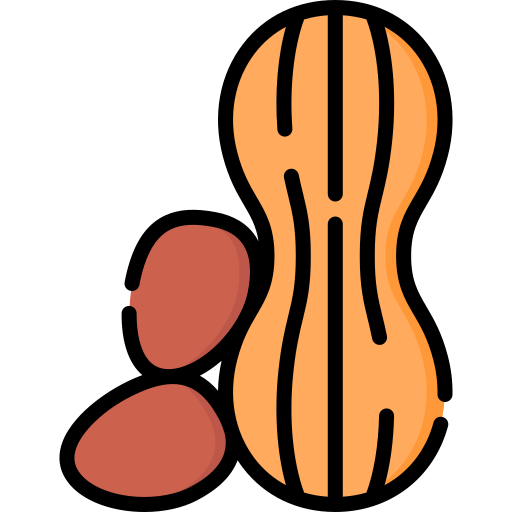
The final type is homemade peanut butter, which is essentially the exact same as the second type, but made in your own kitchen. Homemade Natural Nut Butter is cheap and delicious. Just blend roasted nuts in a food processor for about 5-10 minutes, or until ultra creamy, and then blend in some salt.
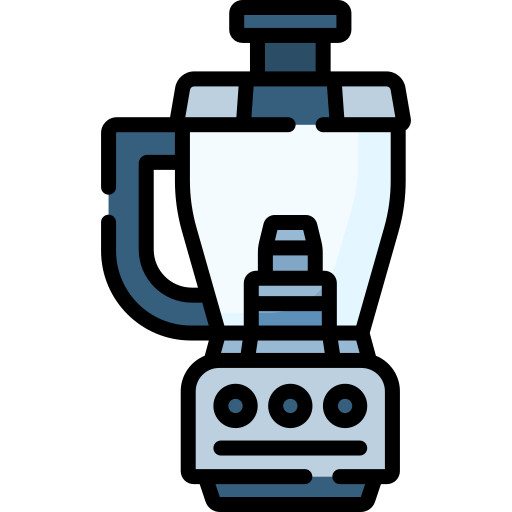
The Experiment
For the purposes of this experiment, I will be using the second type. I got a 1 lb (16 oz, 454 g) jar of natural peanut butter from Trader Joe's today for just $2.49. I will be starting by pouring the top layer of oil off and measuring the drained off fat. Then, I will spread the remaining peanut butter into a silicone air fryer liner before dehydrating at 120F for about 6 hours. Finally, the peanut butter will be blended into a powder and measured out.
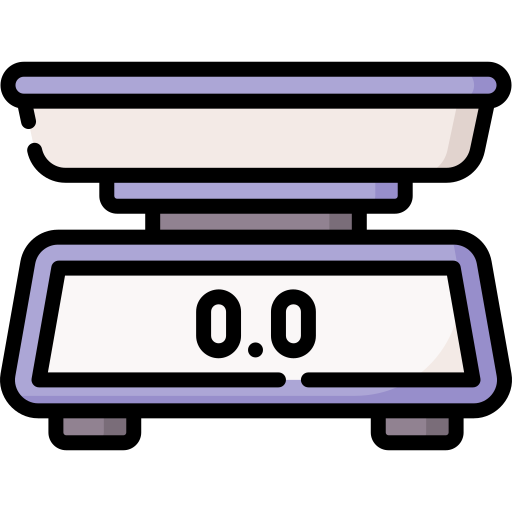
The second type of peanut butter was chosen, as the oil can simply be poured off. Homemade peanut butter could technically work, but you'd need to wait months for the oil to seperate, and that isn't worth it for saving a couple of bucks.
.png)
The Plan
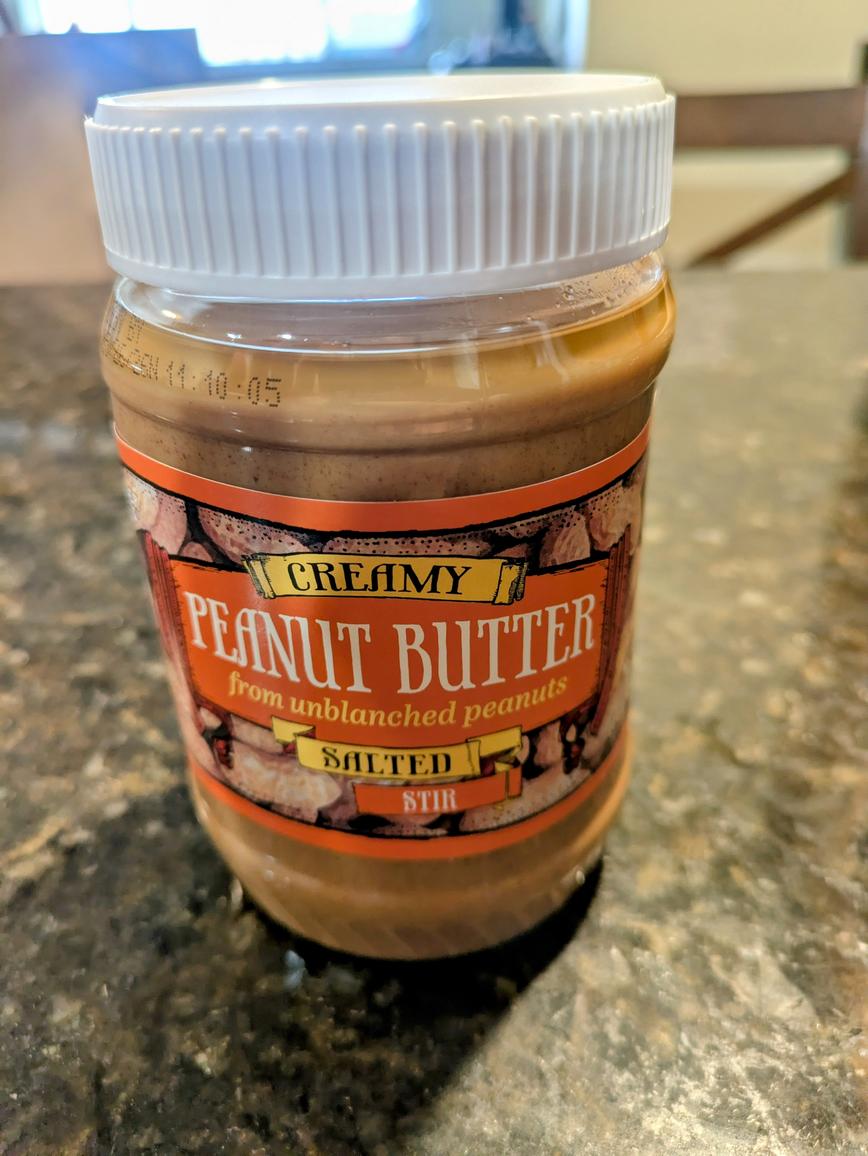

It's Time For Some Math!
This jar of peanut butter weighs 1 lb (16 oz, 454 g), has 14 servings (2 tbsp, 32 g), and has the following nutritional information:
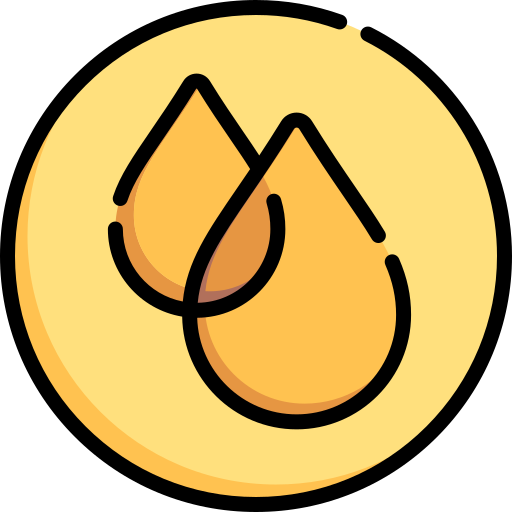
The main way to cut down the fat is to just pour off the oil on top. This accounted for about 20 g. Assuming this was entirely fat (as the top is just oil), this knocks 180 calories off the total batch, or 12.9 calories and 1.43 g of fat per serving.
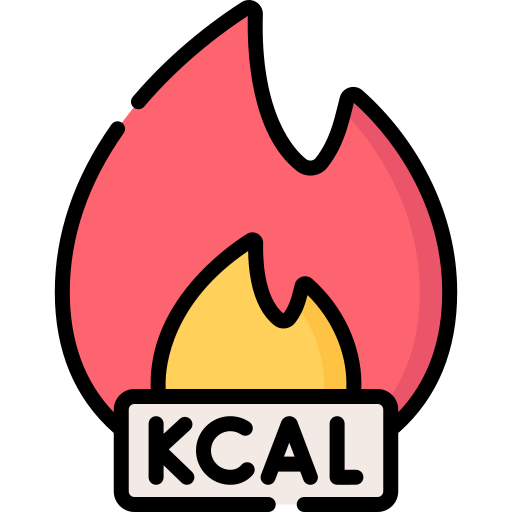
But...that's it. Unless you have an oil press laying around at home, you can't really get any more fat out of this. I tried draining out the oil through a fine mesh strainer, but some of the peanut butter started to come through as well. The addition of a cheese cloth would have helped, but there's only so much you can do at home:
.png)
(Attempting) Dehydration
While trying to prevent as much waste as possible, I transferred the remaining peanut butter into a air fryer liner to dehyrate at 120F for 6 hours. After 6 hours, I ended up with the result below. On the left is before dehydrating, and the right is after. Notice anything? Yeah me neither. This did absolultely nothing lol. Turns out, you absolutely cannot dehydrate peanut butter at home.
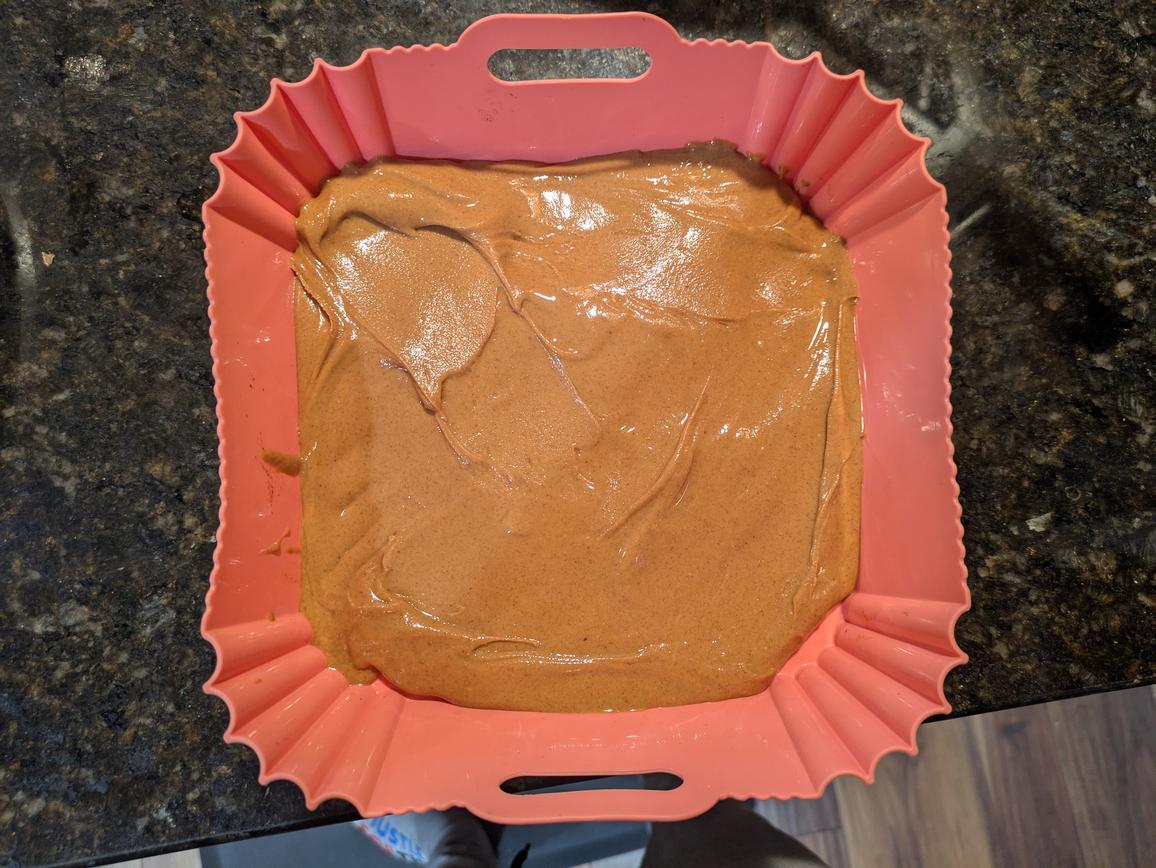
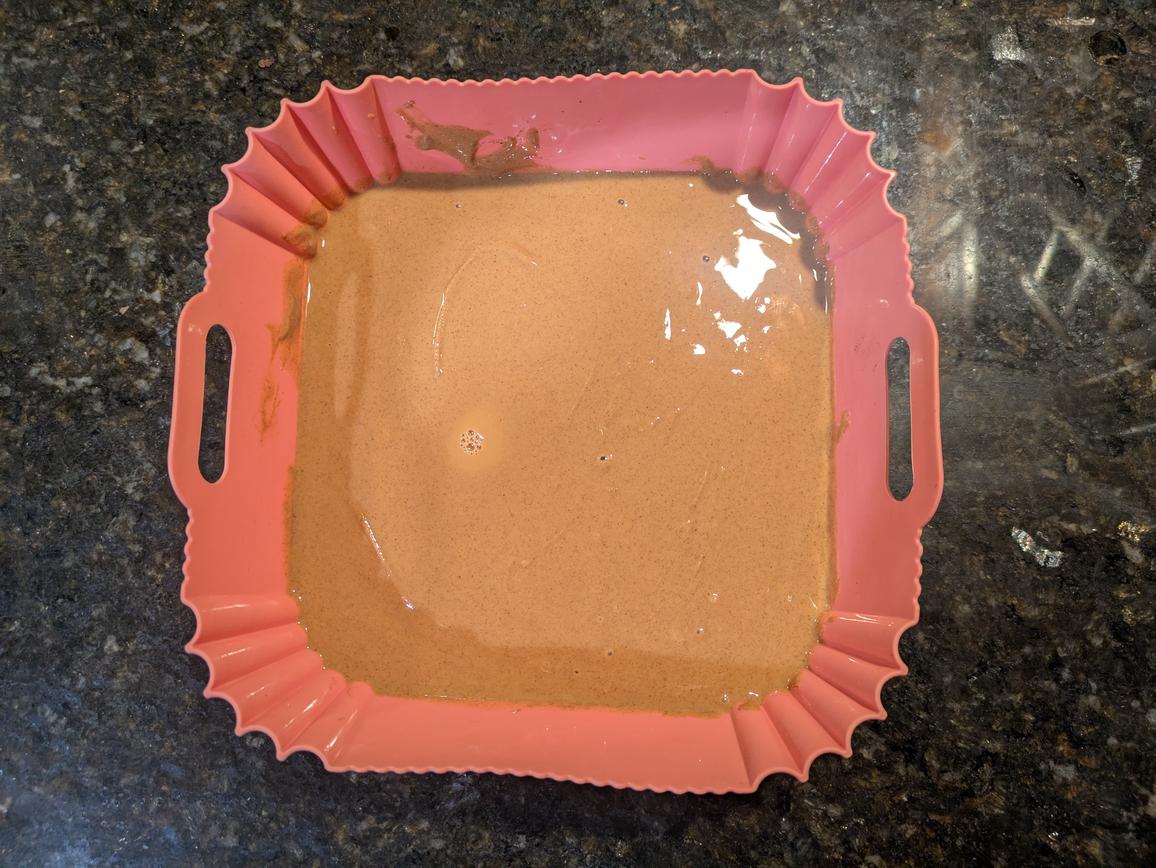
Buying Powdered Peanut Butter
Let's take a look at storebought powdered peanut butter. A 30 oz (850 g) container contains peanuts, a little bit of sugar (1 g per serving), and salt. With a serving size 2 tbsp (13 g), this means that there's 65 servings per container. The nutrition facts are as follows:

At $2.49 for 14 servings, the Trader Joes Peanut Butter comes in at $0.18 per serving (2 tbsp, 32 g). In comparison, Great Value Powdered Peanut Butter costs $10.48 for 30 oz, or $0.35 per ounce and $0.15 per serving (2 tbsp, 12 g). Wait, powdered peanut butter is cheaper (per serving) than regular peannut butter? If you're not able to get to a Walmart and need to resort to the name brands though, PB2 and PBFit are more expensive than both the Great Value Powdered Peanut Butter and the Trader Joes Natural Peanut Butter. PB2 is $16.99 for 32 oz, whereas PBFit Classic is $13.01 for 30 oz. That's $0.57 per ounce and $0.22 per serving for PB2, and $0.43 per ounce and $0.18 per serving for PBFit Clasic.
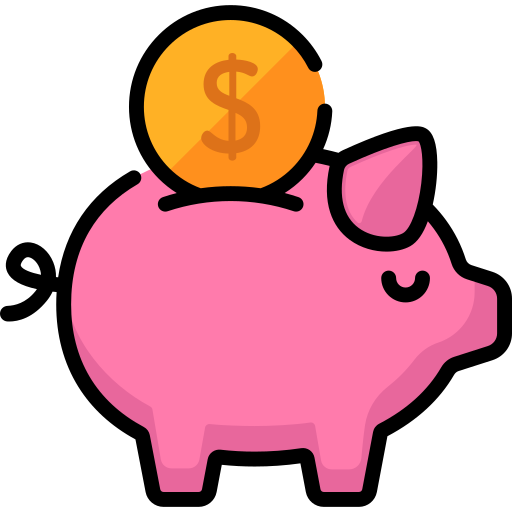
If you don't mind spending a little bit more, then I'd recommend PBfit Simply Peanut powdered peanut butter. Most powdered peanut butter products have a little bit of added sugar and salt; but this product is just defatted peanuts. It's $12.11 for 24 oz, or $0.50 per ounce and $0.21 per serving.

Conclusion
Unless I had an expensive oil press to get out 80% (or more) of the fat, this experiment was bound to fail. Just buy powdered peanut butter. Oh well, you live and learn.
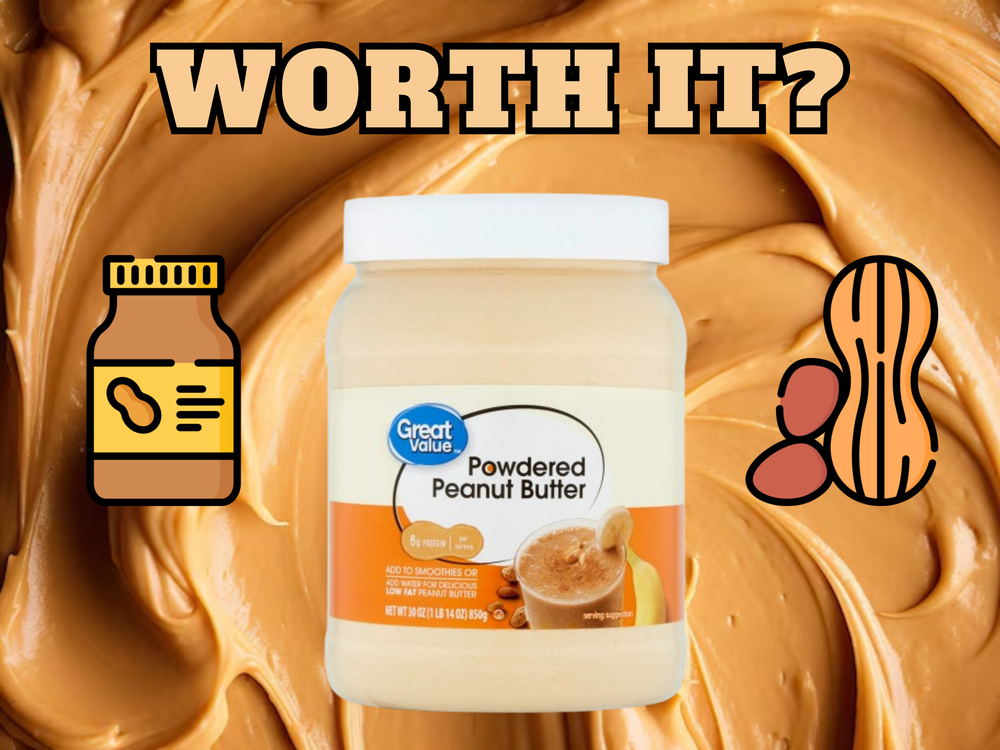
If you would like to read more about powdered peanut butter, you can check out a different post: Are Powdered Peanuts Worth It? In that, I calculated how much it would cost to reconstitute powdered peanut butter with peanut oil, extra virgin olive oil, water, and unsweetened almond milk. Finally, for some recipes using powdered peanunt butter, check out the links below:

Sources
Powdered peanut butter, more commonly known under the brand names PB2 or PBFit, is a very common ingredient in low calorie, high protein desserts and breakfasts. Essentially, it's peanuts with the oil pressed out of them, and then dehydrated and blended into a powder. The result is essentially a peanut butter flavored protein powder.

It can either be mixed with water to create a peanut butter substitute for a fraction of the calories, or it can be mixed in as an ingredient similar to flour, cocoa powder, or protein powder. But as powdered peanut butter can be both an obscure and expensive ingredient, it got me thinking: is it possible to make it yourself at home? And if so, is it even cheaper?

The 3 Types of Peanut Butter
The way I see it, there are 3 main types of peanut butter. First, is the storebough junk (imho), typically called either "creamy" or "no-stir". These "peanut butters" contain hydroginated oils, sugars, preservatives, and emulsifiers. They're over sweet, pasty, and don't taste like peanuts. If your turn it upside-down and it doesn't pour out, then it's not real peanut butter.

The second type is store-bought natural peanut butter. These contain only 2 ingredients: peanuts and (optionally) salt. They taste amazing, are minimally processed, and need to be stirred before use. Natural peanut butters are the ones that typically contain a large amount of oil on the top, as it doesn't have the stabilzers to prevent the oil from separating out. Just mix it with a knife, and you're good to go.

The final type is homemade peanut butter, which is essentially the exact same as the second type, but made in your own kitchen. Homemade Natural Nut Butter is cheap and delicious. Just blend roasted nuts in a food processor for about 5-10 minutes, or until ultra creamy, and then blend in some salt.

The Experiment
For the purposes of this experiment, I will be using the second type. I got a 1 lb (16 oz, 454 g) jar of natural peanut butter from Trader Joe's today for just $2.49. I will be starting by pouring the top layer of oil off and measuring the drained off fat. Then, I will spread the remaining peanut butter into a silicone air fryer liner before dehydrating at 120F for about 6 hours. Finally, the peanut butter will be blended into a powder and measured out.

The second type of peanut butter was chosen, as the oil can simply be poured off. Homemade peanut butter could technically work, but you'd need to wait months for the oil to seperate, and that isn't worth it for saving a couple of bucks.
.png)
The Plan
- Pour off the fat
- Dehydrate at 120F for 6 hours
- Grind into a powder


It's Time For Some Math!
This jar of peanut butter weighs 1 lb (16 oz, 454 g), has 14 servings (2 tbsp, 32 g), and has the following nutritional information:
| Nutrient | Per Serving | Per Container |
|---|---|---|
| Calories | 190 | 2,660 |
| Protein | 8 g | 112 g |
| Fat | 16 g | 224 g |
| Carbs | 7 g | 98 g |
| Fiber | 3 g | 42 g |

The main way to cut down the fat is to just pour off the oil on top. This accounted for about 20 g. Assuming this was entirely fat (as the top is just oil), this knocks 180 calories off the total batch, or 12.9 calories and 1.43 g of fat per serving.

But...that's it. Unless you have an oil press laying around at home, you can't really get any more fat out of this. I tried draining out the oil through a fine mesh strainer, but some of the peanut butter started to come through as well. The addition of a cheese cloth would have helped, but there's only so much you can do at home:
| Nutrient | Per Serving | Per Container |
|---|---|---|
| Calories | 177 | 2,480 |
| Protein | 8 g | 112 g |
| Fat | 14.5 g | 204 g |
| Carbs | 7 g | 98 g |
| Fiber | 3 g | 42 g |
.png)
(Attempting) Dehydration
While trying to prevent as much waste as possible, I transferred the remaining peanut butter into a air fryer liner to dehyrate at 120F for 6 hours. After 6 hours, I ended up with the result below. On the left is before dehydrating, and the right is after. Notice anything? Yeah me neither. This did absolultely nothing lol. Turns out, you absolutely cannot dehydrate peanut butter at home.


Buying Powdered Peanut Butter
Let's take a look at storebought powdered peanut butter. A 30 oz (850 g) container contains peanuts, a little bit of sugar (1 g per serving), and salt. With a serving size 2 tbsp (13 g), this means that there's 65 servings per container. The nutrition facts are as follows:
| Nutrient | Per Serving | Per Container |
|---|---|---|
| Calories | 60 | 3,900 |
| Protein | 6 g | 390 g |
| Fat | 1.5 g | 97.5 g |
| Carbs | 5 g | 325 g |
| Fiber | 1 g | 65 g |

At $2.49 for 14 servings, the Trader Joes Peanut Butter comes in at $0.18 per serving (2 tbsp, 32 g). In comparison, Great Value Powdered Peanut Butter costs $10.48 for 30 oz, or $0.35 per ounce and $0.15 per serving (2 tbsp, 12 g). Wait, powdered peanut butter is cheaper (per serving) than regular peannut butter? If you're not able to get to a Walmart and need to resort to the name brands though, PB2 and PBFit are more expensive than both the Great Value Powdered Peanut Butter and the Trader Joes Natural Peanut Butter. PB2 is $16.99 for 32 oz, whereas PBFit Classic is $13.01 for 30 oz. That's $0.57 per ounce and $0.22 per serving for PB2, and $0.43 per ounce and $0.18 per serving for PBFit Clasic.

If you don't mind spending a little bit more, then I'd recommend PBfit Simply Peanut powdered peanut butter. Most powdered peanut butter products have a little bit of added sugar and salt; but this product is just defatted peanuts. It's $12.11 for 24 oz, or $0.50 per ounce and $0.21 per serving.

Conclusion
Unless I had an expensive oil press to get out 80% (or more) of the fat, this experiment was bound to fail. Just buy powdered peanut butter. Oh well, you live and learn.

If you would like to read more about powdered peanut butter, you can check out a different post: Are Powdered Peanuts Worth It? In that, I calculated how much it would cost to reconstitute powdered peanut butter with peanut oil, extra virgin olive oil, water, and unsweetened almond milk. Finally, for some recipes using powdered peanunt butter, check out the links below:
- 100 Calorie Protein Bars
- Banana Bread Hummus Spread
- Chickpea Chows
- Cottage Cheese Peanut Butter
- High Protein Hot Chocolate
- Nam Sod (Thai Pork Salad)
- No Bake Protein Brownies
- Peanut Butter Banana Pie
- Peanut Butter Date Cookies
- Peanut Butter Fudge Bars
- Peanut Chili Chicken Skillet
- Peanut Chili Salad Dressing
- Protein Pumpkin Loaf
- Sugar Free Peanut Butter Cheesecake


Sources